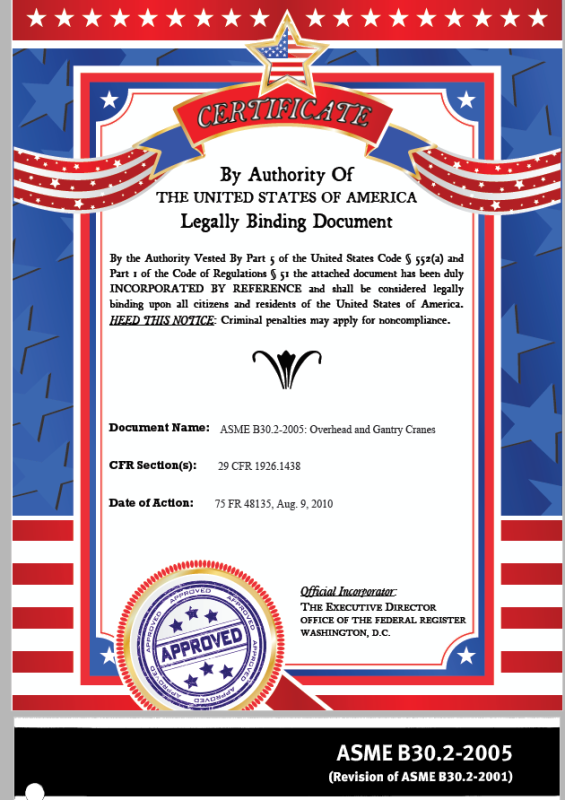I got a request from a fellow engineer at the plant asking about doing a planned engineered lift per ASME B30.2. The hoist they want to use is rated for 3 tons (i.e. 6000 lbf), and the item they want to pick is 6100 lb.
ASME B30.2 3.2.1.1(a) says “Planned engineered lifts shall be limited to powered cranes having a load rating of 5 tons and above.” I’m not yet sure how that difference will affect us. To me this seems like the proposed lift is outside the scope of ASME B30.2 and perhaps not allowed.
Is there another reference out there that would cover this subject more thoroughly? (e.g. OSHA section? CFR 1910.XX?)
BTW, I am planning to ask the manufacturer for guidance. They're usually quite interested in this sort of thing. Also, standards are nice, but the local authority having jurisdiction will govern.
ASME B30.2 3.2.1.1(a) says “Planned engineered lifts shall be limited to powered cranes having a load rating of 5 tons and above.” I’m not yet sure how that difference will affect us. To me this seems like the proposed lift is outside the scope of ASME B30.2 and perhaps not allowed.
Is there another reference out there that would cover this subject more thoroughly? (e.g. OSHA section? CFR 1910.XX?)
BTW, I am planning to ask the manufacturer for guidance. They're usually quite interested in this sort of thing. Also, standards are nice, but the local authority having jurisdiction will govern.

![[unclesam] [unclesam] [unclesam]](/data/assets/smilies/unclesam.gif)
